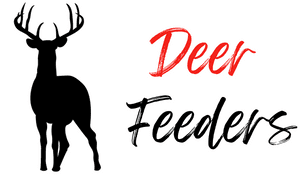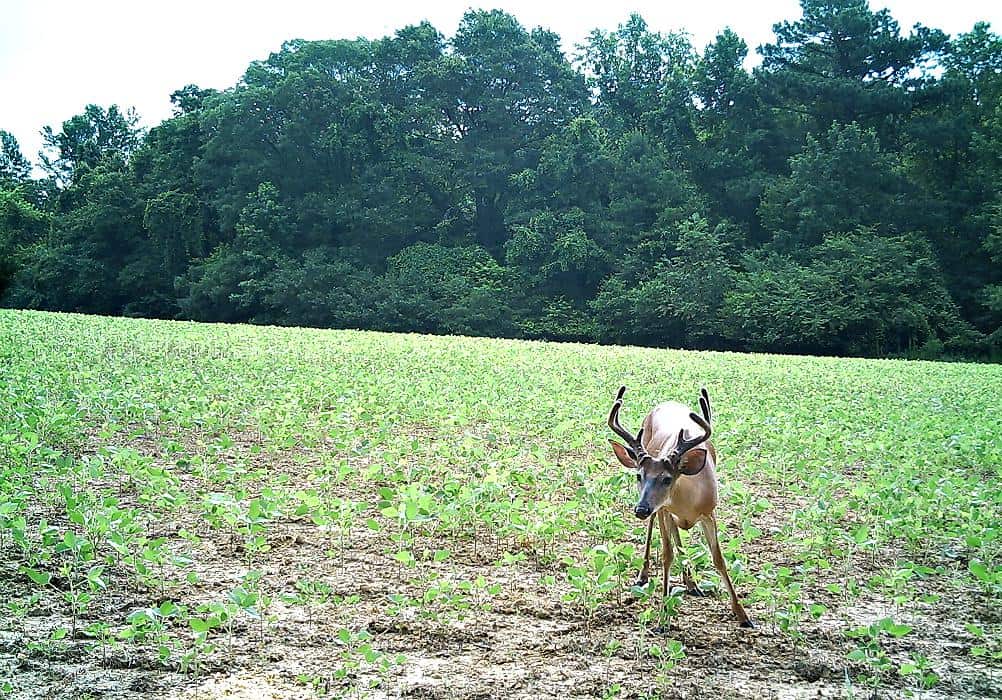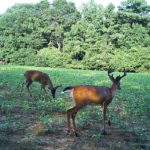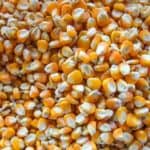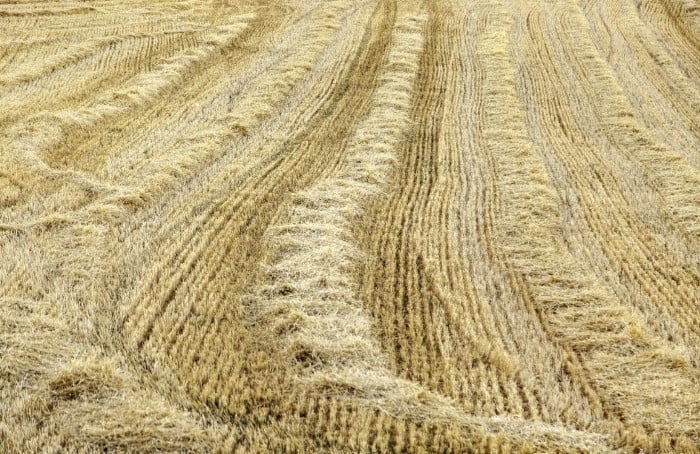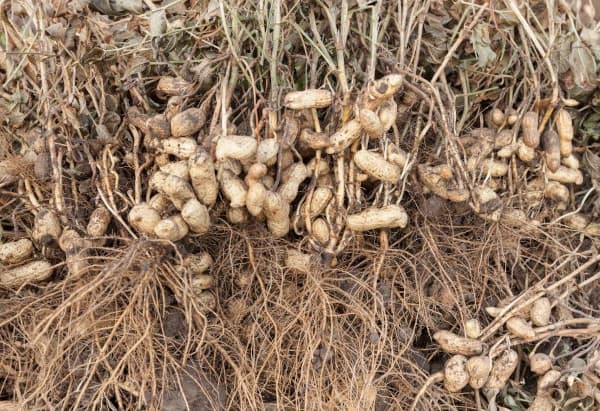Over the years, deer food plots have become a powerful tool in deer hunting and Whitetail herd management. The idea of planting crops to both attract deer and provide them with a supplemental food source has gained significant support within the deer hunting and deer management communities. One question that seems to be asked repeatedly with food plots is: what’s the best food plot for deer in the winter?
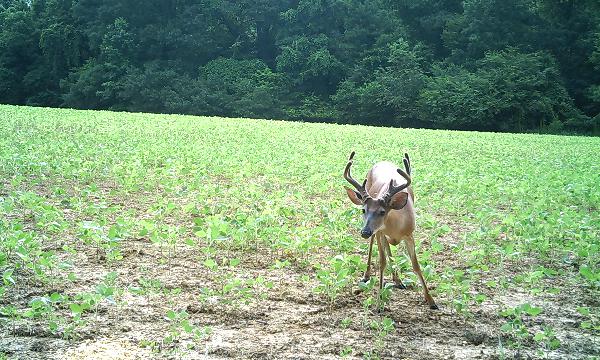
Here’s a look at trying to answer that specific question, along with some food plot tips and tricks that I’ve picked up over the years.
What is a Deer Food Plot?
A food plot is a term used to describe an area of plants or food sources designated for different wildlife species, although they are most popular for use with Whitetail Deer. Food plots go by many names, including deer plots, deer fields, game plots, etc. Although the actual descriptive term may vary, all the terms are referring to a food plot.
The purpose of a deer plot or food plot is to serve as a supplemental food source during the fall or winter months when natural food sources are scarce.
Types of Food Plots
Food plots can be loosely broken down into three different types:
- Nutrition Plots
- Hunting Plots
- Combination Plots
Nutrition Focused Plots
Nutrition-based deer plots are plots grown specifically as a food source without any hunting pressure. While most hunters use either a hunting-focused plot or a combo plot (food source + hunting opportunity), a large tract of land may also support a designated food-only plot not used for hunting purposes. This type of plot is geared solely towards assisting the health and population of a deer herd.
Hunting Focused Plots
Much like the name describes, these are food plots that are created specifically for hunting purposes. While you can hunt over one of these food plots, you can also set up a stand in travel corridors areas around the plot that deer are using. One of my favorite methods is to set up a stand along trails between the food plot and bedding areas, knowing that I may have opportunities when the bucks are coming to and from a plot.
Combination Plots
A combination deer plot is one that serves as a food source for the deer as a hunting opportunity. Many combo plots are maintained or planted year-round, so they offer a constant food source and then are only hunted during the season.
Of the three plot types, the hunting-focused and combination plots are the most common.
When to Plant a Winter Food Plot
If you do any research online about when to plant a winter food plot, you’ll probably see a wide range of suggested times to start the planting process.
Here’s the thing to know about winter food plots: the optimum time to plant those winter seeds varies greatly depending on what region of the United States you hunt or live in. So, there is no one size fits all date range for planting winter food.
The suggested planting dates also depend on factors such as:
- Specific climate
- Average rainfall
- Fall and winter temperatures
And there can be significant differences in the suggested planting dates between the different areas of the U.S. For example, I’ve got friends in Texas who have to get winter plot seeds in the ground between September 15th to November 15th, or the seed won’t fully germinate. Now, compare that to a buddy in northern Kansas who reports that he has to get winter crop seed in the ground by September 1st, or they won’t survive the cold weather.
My recommendation for suggested dates or seasons to plant a winter deer plot or food plot is to check with the state wildlife resources or your state’s agriculture resources. Those two sources almost always have good information about ideal times to plant winter crops for plots.
Another good source of data on this topic is the plot seed brands themselves. Most of the popular seed mixtures brands will feature suggested planting periods based on the state or region.
Where You Should Plant Your Winter Deer Plot
A big part of success with winter food plots involves two areas:
- Plot Planning
- Plot Preparation
Food Plot Planning
At my day job, I have the opportunity to talk to deer hunters who are just beginning their experience with food plots and more experienced hunters who already have a proven experience with deer plots.
Lack of planning, along with a few other key issues, seems to be a common mistake with newer hunters, so here are a few tips that help your planning process:
Satellite Images
I find satellite images from Google Earth or an application like OnX Hunt to be beneficial with the planning process. I prefer to mark a satellite image or pic with specific data such as:
- Known bedding areas
- Known travel routes
- Natural or man-made routes like logging roads or ATV trails
- Deer Feeder locations (if applicable)
- Existing or potential hunting stand or tree stand positions
Once I have all that data marked, I look for existing open spaces or existing fields that could be utilized for food plot spaces. I prefer to start with existing open spots or fields as they require less prep work to get ready for the season.
If possible, I prefer to use an existing field or open space for food plots versus clearing trees or land to convert to a plot. I prefer this option as it’s less expensive, less work, and the deer in the area are already familiar with the existing topography of the field.
Fall Plots vs Winter Plots
Another factor to consider during the planning phase is the plot season and the expected type of seeding. Most hunters either focus on fall forage plots, winter food plots, or a combination of both. Some hunters I know also use spring and summer plots, but I prefer to focus my efforts on fall and winter plot set-ups.
Remember that you may have a very short fall season or a very long winter season depending on your specific geographical location, so it’s essential to plan appropriately.
While you can set up a food plot that incorporates both fall and winter food sources, I prefer to separate those two seasons into different plots (if possible).
Plot Preparation
In many cases, the actual preparation of the plot area can be just as vital as the planting process. Investing the time and effort prepping the food plot can be the difference between a successful plot and a waste of time.
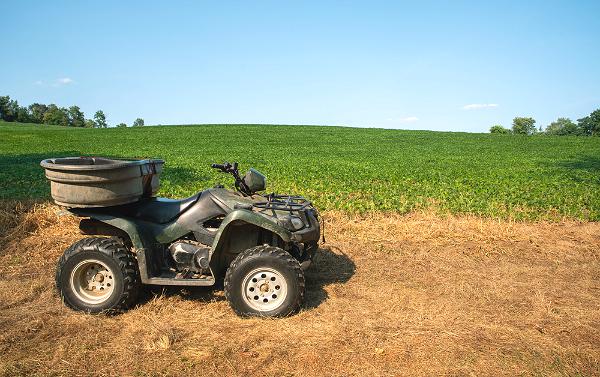
The plot preparation steps I generally focus on are these (in no particular order of importance):
- Soil Testing (if it hasn’t already been done)
- Agricultural Lime Application (if needed)
- Fertilizer Application (if required)
- Weeding
Let’s go a bit deeper into each topic:
Soil Testing
Before you even break ground on a plot, I strongly suggest that you have the soil tested. A soil test is inexpensive and will determine two essential factors:
- The soil pH
- Nutrient levels
The soil pH level plays a significant role in the absorption of nutrients. If you don’t have the soil tested and the pH is high, you’re just throwing money, time, and effort down the drain without lime correction. My first attempt at a small food plot was a disaster as hardly any of the seeds germinated. I had not tested the soil and later found out that the pH level was way too high, and the soil was acidic.
While the pH level can be corrected with a lime application, the nutrient absorption levels will determine the type and volume of fertilizer needed to support the plant growth. Once you have that data, applying the appropriate amount and type of fertilizer into the soil no longer becomes guesswork.
Agricultural Lime Application
Agricultural lime is a generic mineral-based solution comprised of calcium and magnesium-rich mineral components, including lime, chalk, and marl. When applied to soil, lime works to reduce soil acidity, which improves plant growth. However, using too much lime can be detrimental to plant growth as well.
The concept of liming a food plot is only applicable once the soil has been tested as the test results will determine whether lime is needed to reduce the soil pH and will play a role in determining the amount or volume of lime required for proper pH.
Fertilizer Application
The soil testing process will also provide you with details about the soil quality and whether or not the food plot soil requires any supplemental fertilizer.
Depending on your individual planting season, lime and fertilizer (if needed) can be applied at different times or may be eligible to be used together.
Weed Killer Application
In most cases, it will also be necessary to apply a weeding agent to the crop at some point in the process. Depending on the specific crop being grown, some weed preventatives can be applied before seeding, while other crops may require either a post-seeding weed killer application or spot treating.
The most popular weed killer application for food plots is Glyphosate, which is better known by its trade name of Roundup. Glyphosate is popular for several reasons, including its low costs and the fact that several common food plot crops, like corn and soybeans, are available in a Glyphosate-resistant version. These crop seeds are known as “Roundup Ready.” However, Glyphosate also has some potential issues, including a known health risk, and it kills any plant that is not Glyphosate-resistant once applied.
Other typical weed applications include specific herbicides to focus on either grass or broadleaf weeds. For grass, the most common chemical pesticides for food plots are Sethoxydim (which has a trade name of Poast) or Clethodim (which has a trade name of Arrest Max or Arrow).
For broadleaf weeds, the most popular herbicide is 2,4-D (which has several trade names) or 2,4-DB (which has a trade name of Butyrac). Note that most of these herbicides listed are made for non-brassicas-based food plots, as they may kill brassicas and chicory.
My last point with herbicides: read the directions thoroughly and wear protective clothing during the application process as most all of the herbicides I mentioned have potential health issues due to exposure. I wear a set of cheap, disposable chemical coveralls, gloves, and an air filtration mask when applying these chemicals and then dispose of those items when finished.
5 Best Winter Food Plots
Here are my top 5 favorite winter food plots for my area (S.E. North Carolina) listed in order of my favorites. Again, the best winter crops for a food plot in your area may vary a bit as some crops do better in cold weather versus some that don’t.
Soybean Food Plots
One of my favorite winter food plot crops is soybeans, and there are one of my go-to winter crops for several reasons. A big reason I like soybeans is the fact that they are relatively easy to plant and maintain with only minimal farm equipment. Plus, they provide better nutrient value than corn, convert to grain in the late winter, and draw deer even under a foot or more of snow.
I also like soybeans because they come in a Roundup-ready variant, and I find that they grow well even in lower quality soil.
Every plot seed or plot crop has a downside, and soybeans are no exception. One issue with Soybeans is that the deer will begin eating the plants as soon as they break the ground and wipe out a plot before the plants bear beans. For this reason, I try to plant soybeans early in the year so that there are several other accessible food sources available for deer when the bean plants are just breaking the ground.
Corn Food Plots
For most hunters east of the Mississippi, corn is another excellent winter deer food. I’m really no different as I also consider corn a fantastic winter food source for deer. I like corn as a cold-weather plot crop because it holds up well to lower temperatures, can provide a food source for most of the winter, and it’s a great source of carbohydrates for deer.
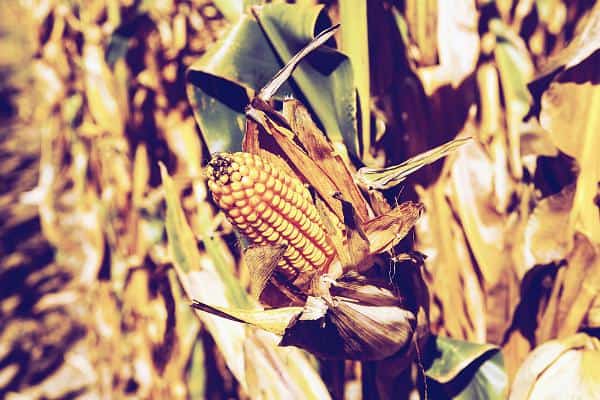
While some hunters prefer to leave the corn standing, I’ve had better success cutting the corn stalks just before the season starts. The downside to leaving standing stalks is, depending on the height of your corn stalks, it may interfere with a clear shot if you are hunting over that plot.
What I don’t like about corn is it requires more equipment to prep and plant versus some other popular winter crops and tends to cost more per acre to maintain. Plus, my experience with corn has shown that it requires good quality soil or, at least, well-supplemented soil to reach optimum corn production.
Winter Wheat, Oats, and Rye (Cereal Grains Food Plots)
While soybeans are one of my go-to winter plots, the cereal grains such as Wheat, Oats, and Rye are my ace in the hole crops. Oats are my favorite crop out of these three options, but oats are really more of a fall food as they don’t seem to do well in colder weather. That being said, I have far more success with oats compared to Brassica plants, but oats have stopped producing by the second good frost of the season.
I find winter wheat to be one of the most versatile winter food plots I’ve ever used. They produce quickly, can be used in conjunction with other plot crops, and hold up well in the winter. Plus, winter wheat is easy to plant (just broadcast it) and grows well, even in low-quality soil.
Rye is another seed I use for plots, although I use it more as a second or third feed source in a plot versus as a primary source of feed. While I don’t feel that deer like Rye as much as oats or winter wheat, they will consume it when food becomes scarce. In addition, Rye is exceptionally hardy and withstands even the coldest winters with heavy snow. Plus, Rye is easy to plant and can grow in almost any soil condition.
Brassica Food Plots
Brassica is a term used to describe plants in the cabbage and mustard family, and certain Brassica plants have become very popular as a cold-weather deer plot crop. Within the Brassica family of plants, rape, kale, turnips, and radishes are the most popular ones for food plots. Some of the Brassica species produce a leafy forage source for deer, while some varieties produce a leaf and bulb for forage.
Rape is the most common seed used in Brassica-based food plots, although I find that a multi-seed Brassica mix combined with winter wheat or Rye produces the best results and offers a wide range of food throughout the colder months.
I’ve had mixed results with Brassica-based plots where some were wildly successful, and others were a complete bust with very little deer foraging. I suspect that they perform better in areas with colder winters coupled with snowfall.
A few things to know about Brassica food plots:
Of all the winter food plot crops I’ve planted, I find Brassica to be the pickiest about soil conditions. The pH and nutrient levels have to be just right for good production and forget about planting Brassica in clay soil.
When successful, a Brassica crop can offer a significant amount of crop for foraging but offering forage opportunities with both leaf and stalk options works best.
Most Brassica-based plots won’t attract deer until after a few good frosts. When a frost occurs, it causes a chemical change where the starch in the plants converts to sugar, so they become significantly tastier for deer. So if you live in a warmer climate area where you receive little to no frost or snow, I’d ignore Brassica’s as a food plot option as you’re probably wasting your time and money.
Brassica plots are hard on the soil, so they should not be planted in the same plot or field for more than two consecutive years. Brassica requires a periodic rotation from one plot to another (if possible).
Rather than plant an entire plot dedicated to Brassica, I prefer to use a broad Brassica seed mix for part of a plot and then plant some other options in the same field.
Winter Plot Mixes
A winter plot mix is a mix of specific winter crops known to work or grow in conjunction with each other. Some of these mixes are commercially available seed products (are there are tons of them), while others may be a manual mix that you put together yourself.
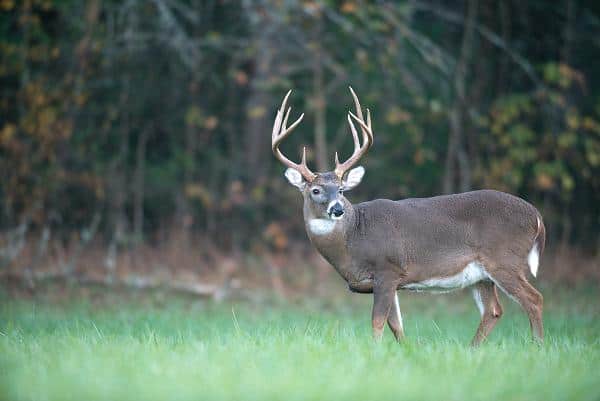
Some examples of winter plot mixes that have performed well for me include:
- Winter wheat and Brassica (which is usually kale or turnips)
- Rye and clover
- Winter Bulbs & Sugar Beets (Mossy Oak Biologic)
- Winter Peas & Rye
- Winter Wheat & Crimson clover
One nice thing about these types of winter seed mixes commercially available is that most are backed by testing and research, so you may be able to skip the trial-and-error process.
Why Seed Quality is Important
While there are several factors that come into play to grow an effective plot, one area that is often overlooked is the quality of the seed mix. Most brand name seed mixes have some form of quality control, so they are consistent with the seed volume and seed quality. However, when you start shopping for winter seed or winter corn, some people try to save money by purchasing off-brands or ultra-cheap seeds.
I’m all for saving money any way that I can, but given the amount of money, time, and effort that can go into a food plot, I prefer not to cut corners on the quality of the seed. The two things in a food plot that I don’t mind paying top dollar are seed quality and fertilizer quality. But, unfortunately, over the years, I’ve found that trying to save money in those two areas has always led to poor results.
FAQS
Here are some of the more commonly asked questions that I see, hear, or am asked at my day job about winter food plots:
What are the best winter food plots for deer in the South?
As a region, the South tends to have very mild winters, so some of the popular winter-focused food plot crops may not perform as well in the S.E. portion of the U.S. compared to areas with colder temperatures and harsher winters.
Let’s take Brassica-based crops as an example. I briefly touched on Brassica crops above but will dive a bit more into it here. While some hunters, plotters, and professional whitetail land managers rave about the benefits and effectiveness of Brassicas for winter food plots, my personal experience has been very hit or miss.
I’ve had Brassica crops that successfully germinated and produced a ton of usable forage but were basically ignored by the deer. Then I’ve other mixed-use plots with just a tiny mix of Brassicas planted that the deer hammered. I suspect that the effectiveness of Brassica crops is somewhat dependent on the colder temperatures, frosts, and snow.
Without a good frost or two, the starches found in Brassica species don’t convert to sugar, and I think that, until that happens, deer don’t find the taste very enjoyable. So, if you live in an area with mild winters and warmer weather temperatures with few good frosts, I’m not sure that Brassica’s will be a real draw for your local deer population.
For the South (and that’s where I’m located), I prefer soybeans, corn, and cereal grains for late-season or winter food plot crops.
What’s the best Rye food plot?
I touched on the topic of Winter rye above but will dive a bit deeper into it here.
Although I don’t think that deer like Winter Rye as much as winter Oats or Winter Wheat, I plant some Winter Rye in just about every winter plot I manage. I like Winter Rye because it’s exceptionally tough and grows in just about any soil, including low-quality soil. In addition, Rye is easy to plant (compared to corn or soybeans), grows very fast, requires little to no fertilizer, and produces a massive amount of food for the cost.
I typically don’t plant Winter rye as a standalone crop but prefer to couple it with other crops such as Winter oats or clover. However, if you have low-quality soil or low fertility rates, and don’t want to spend a ton of money on lime and fertilizer, then Winter Rye may be your new best friend. Winter Rye can grow in soil and locations that no other common winter crop can handle. Plus, it’s the least expensive seed you’ll buy for a deer plot, making it extremely cost-effective.
A word of caution: Winter Rye and Rye Grass are not the same seed. Don’t confuse the two at the seed store, as you’ll be sorry that you did.
And finally, a suggestion about planting Winter rye: Go heavy on the seeding versus light. If you go light, you may end of with a patchy field with some bare spots. I prefer to go heavy on the seed quantity during the seeding process as I’ve had much better results with that approach.
My favorite Winter Rye seed is Pennington Seed Wintergrazer 70 Rye. Don’t let the picture of the cows on the bag fool you; it’s fabulous for deer and turkeys. I’ve had great success with this brand, and it usually starts producing in 14 to 20 days after being planted.
As i come across more questions on this topic, I’ll try to update this page.
